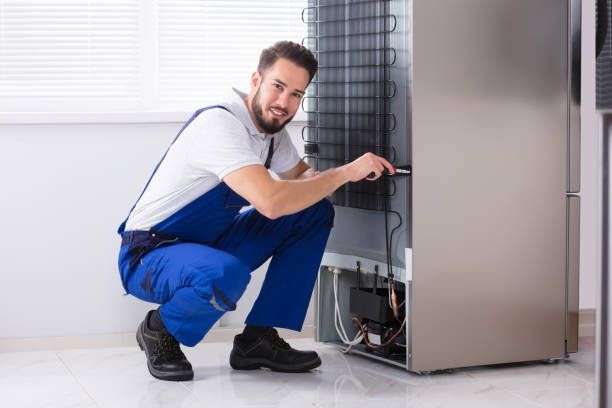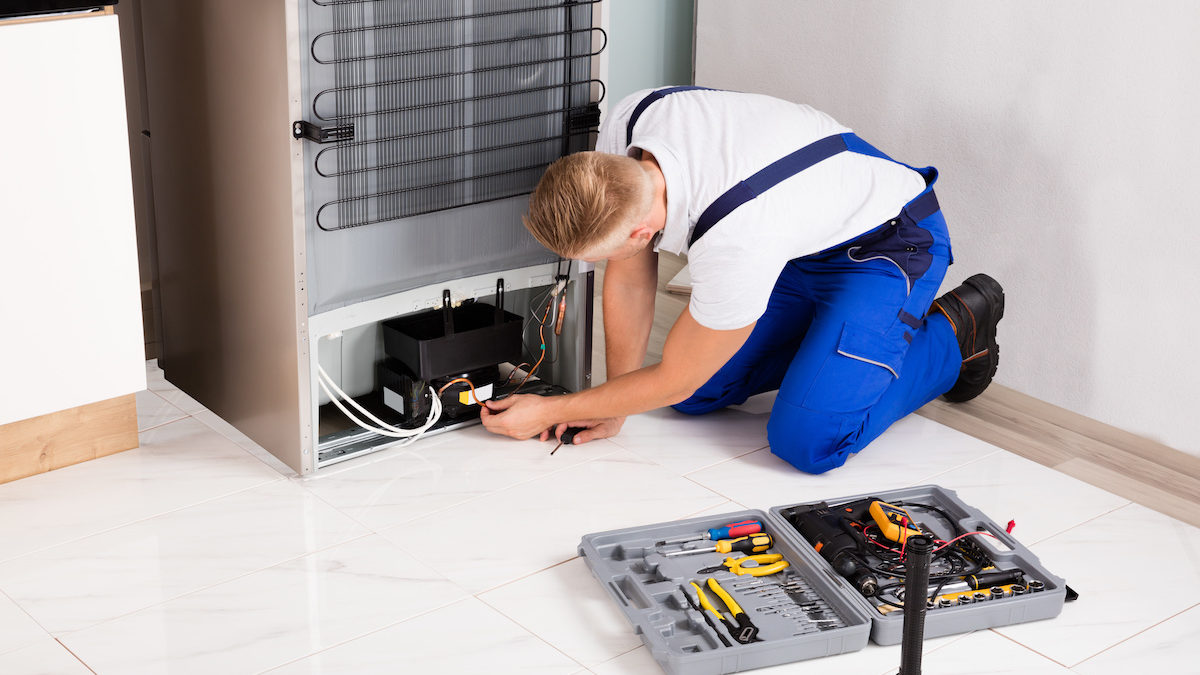The Ultimate Overview to Do It Yourself Device Repair Work Techniques
When home appliances break down, it's simple to really feel overloaded. Dependable Appliance For SubZero Freezer Repair. However with the ideal expertise and tools, you can deal with typical concerns on your own. From fridges to dish washers, comprehending exactly how to fix and fix these devices can save you time and money. Are you all set to find necessary strategies that will encourage you to handle repair work with confidence? Let's check out the crucial areas where do it yourself abilities can make a substantial difference.
Comprehending Usual Appliance Problems
When you depend on your home devices, it can be annoying when they all of a sudden quit working or act up. Understanding common home appliance issues can aid you fix concerns effectively. As an example, if your fridge isn't cooling down, check the temperature setups or inspect the door seal for voids. A defective washing machine could be because of a blocked drainpipe filter or a busted belt.
If your stove isn't heating, defective elements or thermostat issues might be to blame,. Dishwashers commonly experience troubles with drain, so make certain the filter is tidy and the drainpipe hose pipe isn't kinked.
Also, listen for unusual audios; they frequently suggest mechanical concerns. By acknowledging these indicators, you can conserve time and possibly stay clear of costly fixings. A little understanding goes a long method in keeping your home appliances, so stay notified to keep everything running efficiently.
Essential Tools for DIY Repairs
Prior to diving into DIY appliance repairs, it is very important to gather the right tools to assure the process goes smoothly. Begin with an excellent set of screwdrivers, consisting of both flathead and Phillips, as they're essential for opening up most home appliances. You'll also desire a pair of pliers for gripping and twisting cables or tiny components.
Don't fail to remember a multimeter; it assists you examination electric components and detect problems properly. An outlet collection comes in handy for loosening up or tightening up bolts, while an energy knife can be useful for reducing cords or opening up product packaging.
Finally, think about having a flashlight accessible to light up dark spaces inside your devices. With these essential devices, you'll be well-appointed to tackle different repairs, conserving both time and money. Collect your equipment and get all set to roll up your sleeves!
Security First: Precautions to Take
Before you start any home appliance repair work, it's vital to prioritize safety and security. Ensure you wear individual safety tools, separate the power resource, and maintain your job area organized. These basic precautions can aid prevent accidents and ensure a smoother repair process.

Individual Protective Equipment
Safety equipment is a vital component of any type of DIY appliance repair project. Steel-toed boots are also a clever option, especially when lifting heavy appliances. Bear in mind, being prepared with the ideal gear keeps you risk-free and focused on completing your repair work efficiently.
Power Resource Interference
To guarantee a risk-free DIY home appliance repair work, separating the power source is important. This simple action protects against electrical shocks and warranties that you can focus on the fixing without stressing concerning unintended activation. When you're confident that the power is disconnected, you can with confidence continue with your fixings, understanding you've taken the required safety measures to shield on your own.
Job Location Company
An efficient job location can make all the distinction in your Do it yourself appliance repair task. Beginning by clearing your work area of clutter to stop accidents and diversions. A tidy space not just improves performance however likewise maintains you secure while you function on your appliance fixing.
Step-by-Step Guide for Refrigerator Repair Works
When your fridge starts acting up, it can be frustrating, however taking on the trouble on your own can save you time and cash. Inspect for common problems like temperature fluctuations or uncommon noises. For a loud refrigerator, inspect the fan and validate it's not obstructed.
If there's water merging inside, evaluate the door seals for damages or dirt, and clean them if needed. Once you have actually dealt with the issue, plug the fridge back in and check it for a few hours.
Repairing Cleaning Maker Problems
Much like fridges, washing devices can present their own set of challenges, but lots of problems can be settled with a little bit of troubleshooting. If your machine won't begin, inspect the power cord and validate it's plugged in. Next off, examine the door lock; a defective lock can avoid the cycle from beginning. If you discover unusual noises throughout operation, it could be as a result of international items embeded the drum or the drainpipe pump.
If your clothing aren't getting clean, consider the water degree and detergent kind; using also much detergent can produce excess suds, influencing efficiency. For leakages, examine the tubes for splits or loosened links. Tightening these can usually address the trouble. Normal upkeep, like cleansing the filter, can protect against numerous issues from arising. my explanation Keep in mind, a little troubleshooting goes a long means in maintaining your washing machine running smoothly.
Troubleshooting Ranges and ovens
Exactly how can you repair common problems with your oven or stove? Beginning by examining the power supply. Ensure it's plugged in and the circuit breaker is not tripped. If it's a gas oven, validate the gas valve is open. Next off, test the burners: if they do not spark, clean the igniter and look for clogs in the burner ports.
If your stove isn't heating, examine the temperature settings and verify the door seals securely. If it's harmed., a malfunctioning heating component might likewise be the wrongdoer; you could need to change it.
For unequal food preparation, turn your pans and consider utilizing an oven thermostat to verify accurate temperatures. Lastly, if you hear unusual noises or odor gas, turn off the device promptly and speak with an expert. By complying with these steps, you can determine and settle many common oven and range concerns effectively.
Repairing Dish Washers Facilitated
When your dish washer starts acting up, it can be irritating, yet dealing with common issues isn't as hard as it seems. You'll find out step-by-step troubleshooting approaches that will certainly assist you identify the problem, in addition to the essential tools you'll require to take on fixings on your own. Allow's make repairing your dishwasher a breeze!
Usual Dish Washer Issues
While dish washers are created to make your life easier, they can sometimes run right into usual issues that leave you feeling frustrated. If your dishwasher's door will not latch, it might be an easy concern with the lock system or door seal. Resolving these issues early can save you time and inconvenience down the roadway.

Step-by-Step Troubleshooting
Prior to diving right into repair work, it's vital to identify the specific issue your dishwashing machine is dealing with. Start by inspecting if it's not cleaning properly. Inspect the spray arms for clogs and warranty they rotate easily. Take a look at door seals and hoses for any type of damages if it's leaking. For unusual noises, listen carefully during cycles; international objects may be embeded the filter or impeller. If your dishwashing machine won't start, examine the power supply and door lock. Don't forget to consult your individual manual for troubleshooting ideas specific to your design. By methodically addressing each possible issue, you can determine the trouble and take the essential actions to repair it, making your dish washer function fresh once again.
Important Repair Work Tools
Having the right tools available can make all the distinction when repairing your dish washer. Start with a screwdriver collection, as you'll typically need both Phillips and flathead choices. A multimeter's crucial for diagnosing electrical problems, while pliers can help you grip and control various parts. Do not fail to remember a pail or towels for any type of water splashes throughout repair work.
You might likewise desire a degree to guarantee your dish washer's correctly straightened. With these necessary tools, you'll be well-appointed to take on any kind of dish washer visit this site repair work obstacle that comes your way.
Frequently Asked Concerns
Exactly how Do I Figure out if a Home Appliance Is Worth Repairing?
To figure out if a home appliance's worth repairing, consider its age, repair prices, and present worth. If repairs surpass half the replacement expense, you could want to spend in a brand-new design rather.
Can I Discover Substitute Parts Locally for My Appliance?
Yes, you can commonly discover replacement components in your area for your home appliance. Check hardware shops, home appliance service center, or regional classifieds. Don't neglect to dishwasher repair service bring the model number to assure you obtain the right component!
When Repairing Appliances?, what Usual Mistakes Should I Avoid.
When repairing home appliances, stay clear of hurrying through diagnostics, overlooking safety preventative measures, or making use of incorrect devices. Don't avoid reviewing handbooks or enjoying tutorials; they give essential advice. Hold your horses and detailed to guarantee successful repairs and stop additional damage.
The length of time Does a Typical DIY Home Appliance Repair Work Take?
A regular do it yourself appliance repair normally takes one to three hours, depending upon the intricacy. You'll intend to gather your devices and products initially, and comply with directions carefully to stay clear of unneeded hold-ups.
Exist Any Service Warranties for DIY Appliance Fixes?
When you take on do it yourself device repairs, warranties normally do not cover your work. Some producers might honor guarantees for components you change. Always inspect your device's warranty terms prior to beginning any type of repair work to stay clear of problems.
Before diving into Do it yourself appliance fixings, it's essential to collect the right tools to ensure the process goes efficiently.Prior to you begin any kind of device repair work, it's necessary to prioritize security.To guarantee a safe DIY home appliance repair service, separating the power resource is vital.An efficient work area can make all the difference in your DIY device fixing project. Always inspect your home appliance's warranty terms before beginning any type of fixings to avoid concerns.